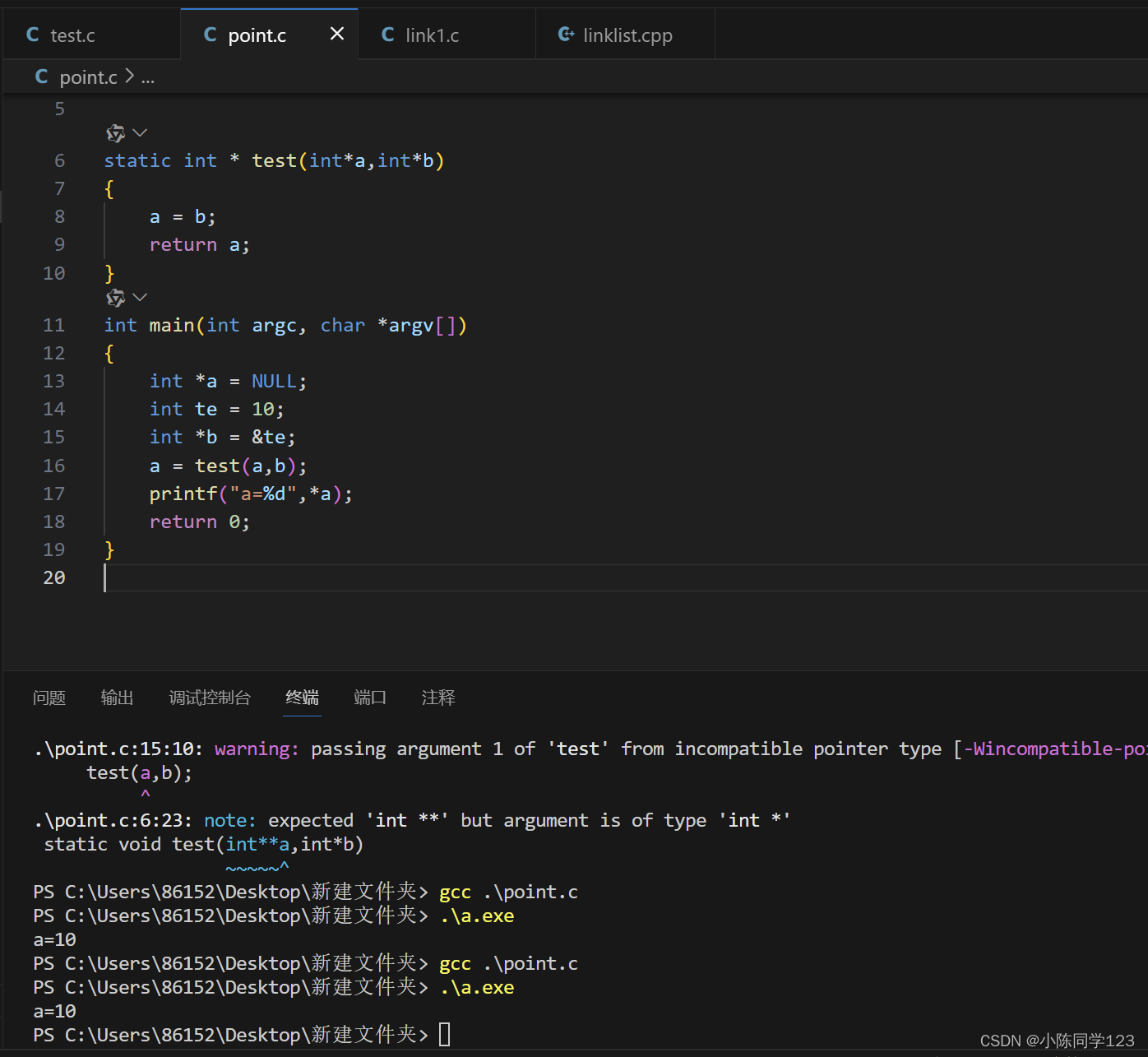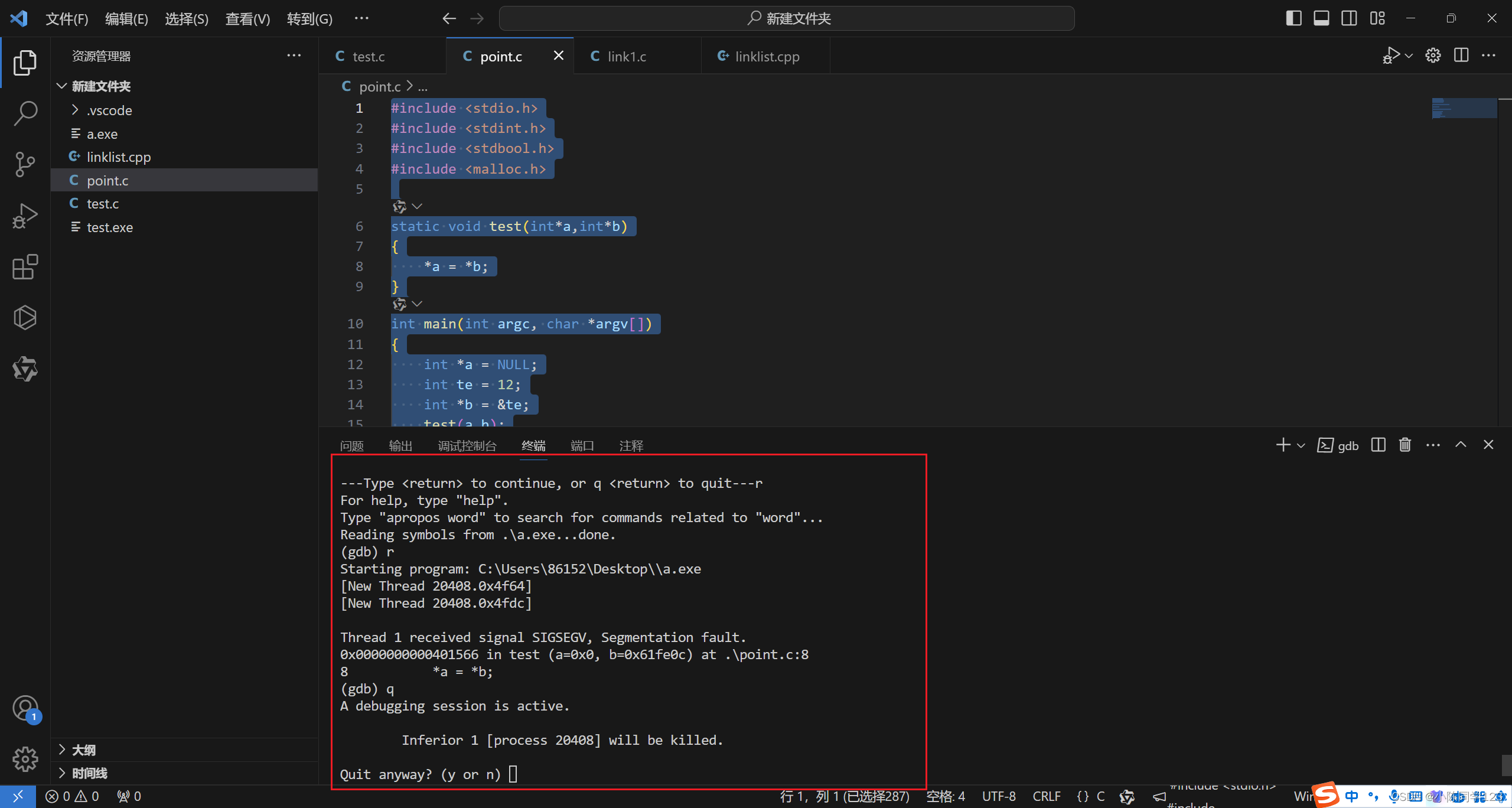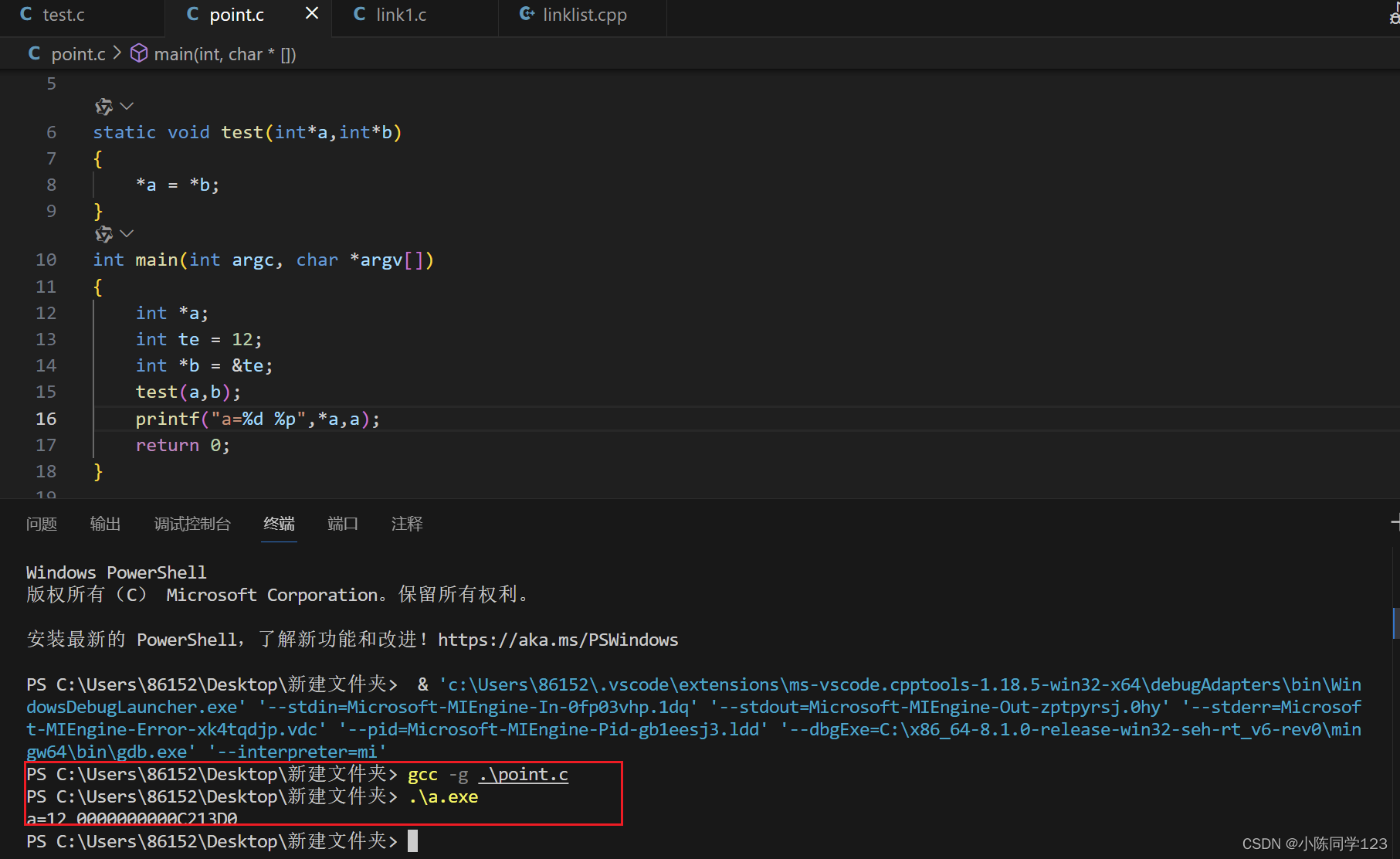指针传参误区
发布时间:2024年01月08日
C语言中指针作为形参传递时,func(*a, *b) 这种形式的话,是无法通过简单的 a=b来修改的,在函数体内a的地址确实被修改成b的地址了,但是当函数执行结束时,a的地址会重新回到原本的地址里面,这边是由于函数执行结束,函数的栈地址被释放了,若是要获取a修改的地址可以采用一下两种形式获取:
形式1:return addr;
#include <stdio.h>
#include <stdint.h>
#include <stdbool.h>
#include <malloc.h>
static int * test(int*a,int*b)
{
a = b;
return a;
}
int main(int argc, char *argv[])
{
int *a = NULL;
int te = 10;
int *b = &te;
a = test(a,b);
printf("a=%d",*a);
return 0;
}

形式2:采用二级指针的形式,func(**a,*b)
#include <stdio.h>
#include <stdint.h>
#include <stdbool.h>
#include <malloc.h>
static void test(int**a,int*b)
{
*a = b;
}
int main(int argc, char *argv[])
{
int *a = NULL;
int te = 12;
int *b = &te;
test(&a,b);//传入一级指针a的地址
printf("a=%d",*a);
return 0;
}

同样的若是要修改指针a的内容,如果a为空指针在函数内调用 *a=*b;就会造成段错误,
#include <stdio.h>
#include <stdint.h>
#include <stdbool.h>
#include <malloc.h>
static void test(int*a,int*b)
{
*a = *b;
}
int main(int argc, char *argv[])
{
int *a = NULL;
int te = 12;
int *b = &te;
test(a,b);
printf("a=%d",*a);
return 0;
}

野指针不会有这个问题,因为野指针会被随机的分配一块内存空间,但是实际使用中仍不建议这样使用,使用野指针操作,可能会踩到其他内存空间造成莫名其妙的死机,并且很难排插问题。

文章来源:https://blog.csdn.net/weixin_45981936/article/details/135457638
本文来自互联网用户投稿,该文观点仅代表作者本人,不代表本站立场。本站仅提供信息存储空间服务,不拥有所有权,不承担相关法律责任。 如若内容造成侵权/违法违规/事实不符,请联系我的编程经验分享网邮箱:chenni525@qq.com进行投诉反馈,一经查实,立即删除!
本文来自互联网用户投稿,该文观点仅代表作者本人,不代表本站立场。本站仅提供信息存储空间服务,不拥有所有权,不承担相关法律责任。 如若内容造成侵权/违法违规/事实不符,请联系我的编程经验分享网邮箱:chenni525@qq.com进行投诉反馈,一经查实,立即删除!